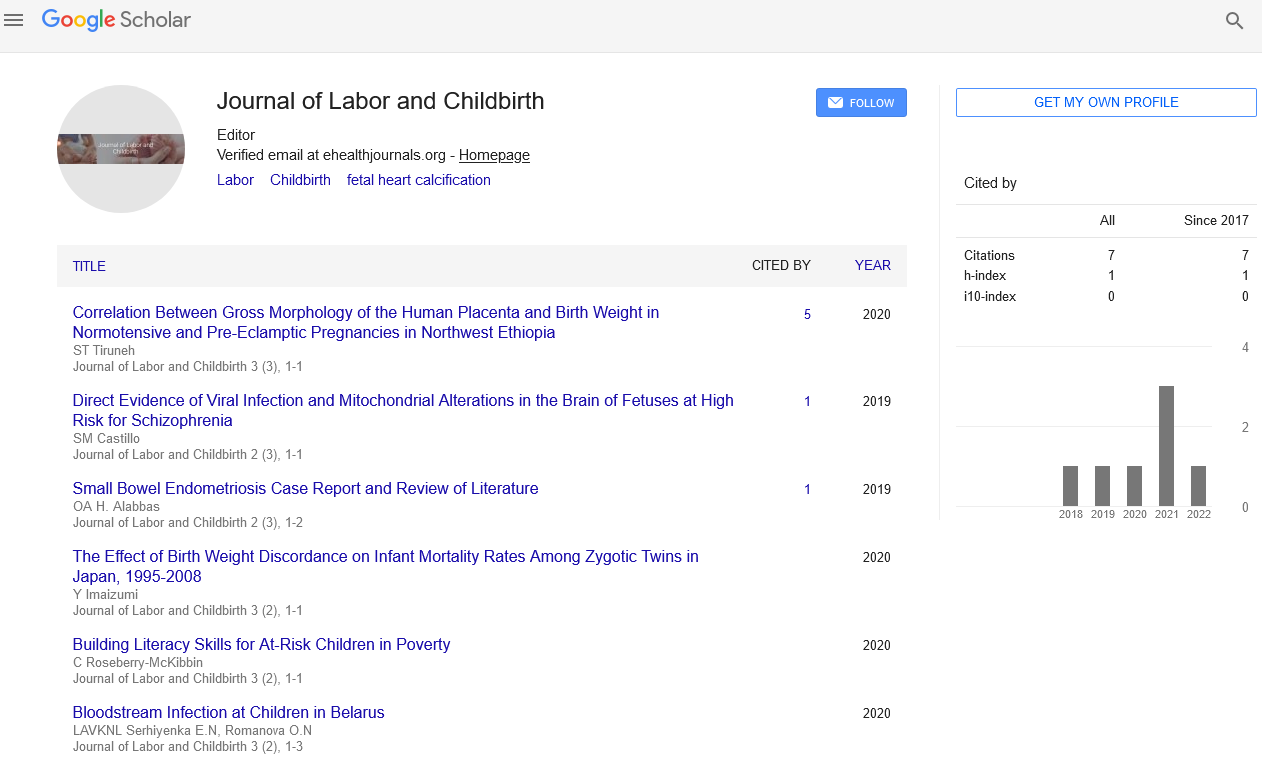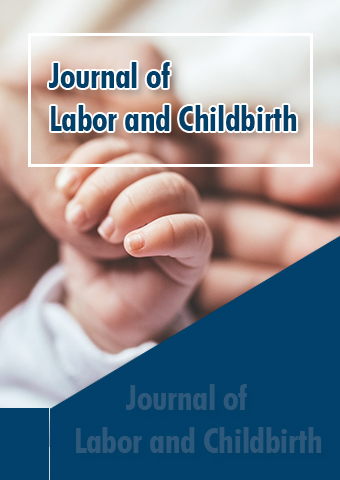Perspective - Journal of Labor and Childbirth (2023) Volume 6, Issue 5
The Hidden Risk of Child Labor in Microfinance: A Moral Imperative for Change
- Corresponding Author:
- Amanda Driscoll
Department of Child Welfare,
Amit University,
Boston,
United States
E-mail: adriscol@fsu.edu
Received: 04-Sep-2023, Manuscript No. jlcb-23-118890; Editor assigned: 07-Sep-2023, PreQC No. jlcb-23-118890 (PQ); Reviewed: 21- Sep-2023, QC No. jlcb-23-118890; Revised: 03-Oct-2023, Manuscript No. jlcb-23-118890 (R); Published: 31-Oct-2023, DOI: 10.37532/ jlcb.2023.6(5).141-143
Introduction
Microfinance, often hailed as a beacon of hope for poverty alleviation and economic empowerment, has transformed the lives of millions across the globe. The idea of providing small loans to individuals who are excluded from the traditional financial sector has been a catalyst for economic growth and social progress. However, within the microfinance sector lies a hidden risk-the peril of child labor. While Microfinance Institutions (MFIs) have made significant strides in financial inclusion, there is an alarming dark side to this story, where the very beneficiaries they aim to support are trapped in a vicious cycle of poverty, compelled to exploit their children to repay loans. In this article, we will delve into the risks of child labor within the microfinance system, its causes, consequences and explore potential solutions to this pressing issue.
Description
Microfinance and its purpose
Microfinance, often synonymous with microcredit, is a financial service that provides small, collateral-free loans to low-income individuals or entrepreneurs who lack access to traditional banking. These loans are intended to support income-generating activities and help people escape the clutches of poverty. Microfinance has been widely lauded for fostering financial inclusion, gender equality and entrepreneurship and it is a vital tool for empowering marginalized communities.
The positive impact of microfinance
Economic empowerment: Microfinance has empowered individuals to start or expand small businesses, creating sustainable sources of income. This, in turn, contributes to economic growth at the community level.
Women’s empowerment: Microfinance has played a crucial role in empowering women, who often face discrimination in access to traditional financial services. It has given women the means to become financially independent and assert their rights.
Poverty alleviation: By providing financial resources to those in need, microfinance has contributed to poverty reduction. Access to credit allows individuals to invest in education, healthcare and housing.
Child labor: A hidden risk
While microfinance has undeniably brought about many positive changes, it is not without its dark side. A significant concern is the risk of child labor associated with microfinance. Child labor is a complex issue with multifaceted causes, but in the context of microfinance, several factors contribute to its prevalence:
High interest rates: Many microfinance institutions charge exorbitant interest rates on loans. Borrowers, under the pressure of these high rates, often resort to child labor as a means to meet their repayment obligations.
Inadequate regulatory oversight: In some regions, the microfinance sector operates with limited regulatory oversight. This lack of supervision can lead to exploitative practices, including the use of child labor.
Over indebtedness: In a bid to expand their businesses or repay existing loans, borrowers may accumulate multiple loans from different microfinance institutions, pushing them deeper into debt. The burden of repaying these loans can result in child labor as a source of income.
Lack of financial literacy: Many microfinance clients lack the financial literacy to understand the long-term implications of their loans fully. This can lead to borrowers making rash decisions, including utilizing child labor to meet repayment demands.
Consequences of child labor in microfinance
The use of child labor in the microfinance sector can have severe consequences, not only for the children involved but also for the entire community. Here are some of the significant repercussions:
Lost childhood: Child labor deprives children of their right to a normal childhood, including access to education, leisure and recreation. It can lead to physical and psychological trauma.
Poverty traps: Child labor is often a result of extreme poverty. However, it can also perpetuate poverty by limiting a child’s ability to receive an education and break the cycle of poverty.
Vulnerable communities: Widespread child labor in microfinance-reliant communities can result in perpetuating poverty and dependence on child labor, creating a vicious cycle.
Deteriorating health: Child labor exposes children to hazardous conditions, long working hours and limited access to healthcare, which can lead to adverse health outcomes.
Reputational damage: Microfinance institutions that are linked to child labor scandals face significant reputational damage and may lose the trust of their clients and investors.
Solutions to mitigate child labor in microfinance
Addressing child labor in microfinance requires a multifaceted approach involving various stakeholders, including microfinance institutions, governments and international organizations. Here are some potential solutions:
Interest rate regulation: Governments and regulatory bodies should establish caps on interest rates charged by microfinance institutions to prevent borrowers from falling into a debt trap that forces them to resort to child labor for loan repayment.
Responsible lending practices: Microfinance institutions must adopt responsible lending practices, including assessing the borrower’s capacity to repay, providing financial l i teracy training and avoiding overindebtedness.
Improved monitoring and oversight:
Strong regulatory oversight is necessary to ensure that microfinance institutions adhere to ethical practices. Regular audits and reporting requirements can help identify and address child labor issues.
Financial literacy programs: MFIs can implement financial literacy programs for their clients to increase awareness and empower them to make informed decisions regarding loans.
Diversification of services: Expanding microfinance institutions’ services to include savings, insurance and financial education can reduce the sole reliance on credit and alleviate the pressure to use child labor for loan repayment.
Community-based initiatives: NGOs, community-based organizations and civil society can play a vital role in creating awareness about child labor and providing support to affected families. They can help identify alternative income-generating activities and promote education.
International collaboration: International organizations, such as the United Nations and the International Labor Organization, can collaborate with governments to combat child labor in microfinance on a global scale. This may include developing guidelines and best practices.
Conclusion
Microfinance, while a potent tool for poverty alleviation and empowerment, is not without its flaws. The hidden risk of child labor within the microfinance system is a pressing issue that requires immediate attention. The consequences of child labor on children and communities are severe and far-reaching. Addressing this problem demands a concerted effort from governments, microfinance institutions, NGOs and international organizations.
The microfinance sector must remember its original mission of alleviating poverty and empowering communities. By implementing responsible lending practices, offering financial literacy programs and promoting oversight, microfinance can regain its status as a force for good and a beacon of hope for marginalized populations. To truly make a difference in the lives of the poor, it is essential to eradicate the menace of child labor from the microfinance landscape, ensuring that it remains a force for positive change and a catalyst for economic and social progress.

